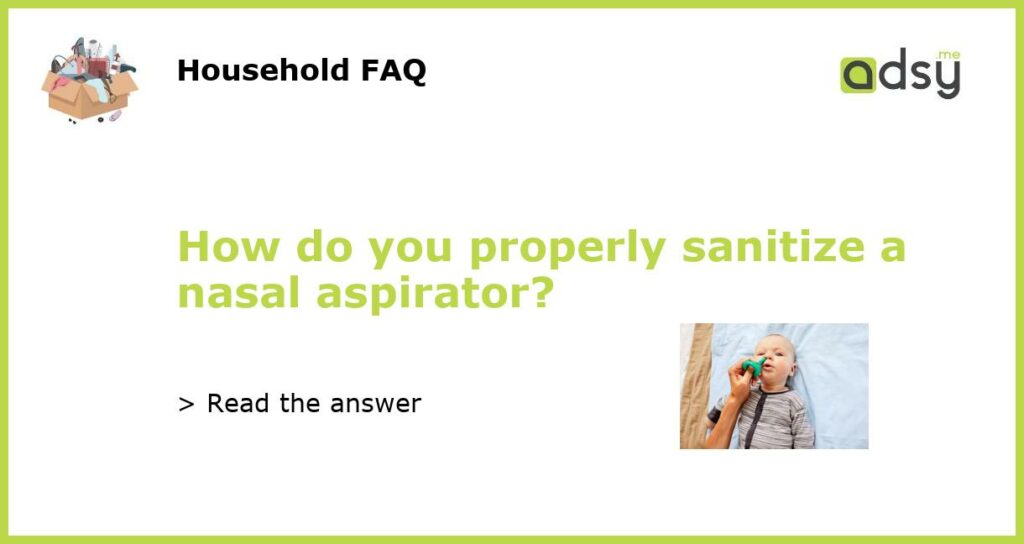A nasal aspirator is a helpful tool in clearing congestion from a baby’s nose. As one of the most important baby health care products, it is essential to know how to properly sanitize it to prevent the spread of germs. In this article, we will discuss five steps to properly sanitize a nasal aspirator to ensure your baby stays healthy and safe.
Step 1: Disassemble and Rinse
The first step in sanitizing your nasal aspirator is to disassemble it. Most nasal aspirators come in two or three pieces. Take it apart and rinse each piece with hot water. Ensure to rinse each piece thoroughly to remove any mucus or debris that may have collected since the last use.
Step 2: Soak in Hot, Soapy Water
Add a few drops of dish soap to a bowl of hot water and soak your nasal aspirator for about 10 minutes. The hot water and soap help loosen and kill germs that may be present in the aspirator. Use a soft-bristled brush to gently scrub the inside and outside of each part of the nasal aspirator. Rinse thoroughly after scrubbing.
Step 3: Sanitize with Vinegar
Mix equal parts of white vinegar and water in a bowl. Add each piece of the nasal aspirator to the mixture, making sure to submerge them entirely. Leave it to soak for about 5 minutes to sanitize completely. Rinse with cold water after that.
Step 4: Boil the Aspirator in Water
Fill a pot with water and place the nasal aspirator pieces in the pot. Ensure the pot has enough water to submerge the nasal aspirator completely. Boil the water for a minimum of five minutes to sanitize the aspirator. Remove the pieces with tongs and place them on a clean towel to dry.
Step 5: Air Dry and Store Properly
To dry the pieces of the nasal aspirator, place them on a clean towel in a sunny area. Leave them to air dry completely. Reassemble these pieces when they are dry and place them on a clean area for storage. Store them in a sealed container or a ziplock bag to protect them from dust and germs.






